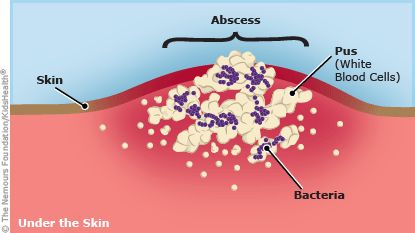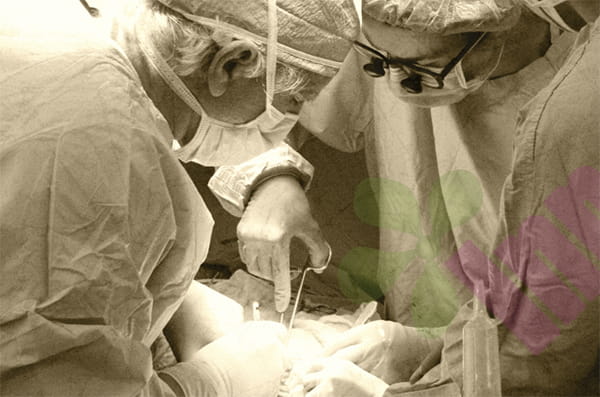Skin abscesses are a common infectious problem, and proper management is crucial to preventing complications. Abscess formation indicates that the local infection has become localized and is filled with pus, requiring proper drainage and anti-infective treatment.

In its early stages, an abscess presents as a localized red, swollen, and hardened nodule with significant tenderness. As the inflammation progresses, the central area gradually softens and becomes fluctuant. The skin surface may become red and hot, and in severe cases, systemic fever may occur. Once the abscess matures, it needs to be incised and drained to remove the pus. Abscesses that rupture spontaneously often have poor drainage and are prone to recurrence.
The timing of abscess incision is crucial. Incision too early may cause the infection to spread, while incision too late will increase patient suffering. The optimal time is when the abscess is fully mature and a clear fluctuation is felt in the center. Small abscesses may be absorbed spontaneously with warm compresses, while larger abscesses require surgical intervention.
Post-incision and drainage wound care is crucial. Initially, alginate dressings are used to pack the abscess cavity and absorb residual pus. Once exudate decreases, foam dressings are used to maintain adequate moisture. Dressings are changed regularly, and wound healing is monitored. The characteristics and amount of pus are recorded to assess infection control effectiveness.
Nursing care for oral abscesses :
Oral abscesses, including periodontal abscesses and periapical abscesses, require specialist dental treatment. Patients often present with severe localized pain, swollen and red gums, and loose teeth. Facial swelling and difficulty opening the mouth may also be present.
The focus of nursing care is on controlling the infection and relieving symptoms. Rinse your mouth with warm saline solution to maintain oral hygiene. Avoid spicy and irritating foods and choose a soft diet. Administer antibiotics as prescribed to control the spread of infection. If necessary, perform incision and drainage to establish a patent drainage channel.
Post-operatively, closely monitor for bleeding and avoid frequent rinsing to prevent blood clot formation. Use a dedicated mouthwash to prevent infection, but do not overuse. Regular follow-up appointments are necessary to ensure complete abscess resolution. For odontogenic abscesses, subsequent root canal treatment or tooth extraction may be required.
Nursing care for internal abscesses :
Internal abscesses, including abdominal abscesses and lung abscesses, are more complex to treat. Imaging studies are usually required to locate the abscess and determine its size and location. Treatment methods include antibiotic therapy, percutaneous drainage, and surgical drainage.
Close monitoring of vital signs and attention to symptoms of infection or poisoning is necessary during nursing care. Monitor temperature changes and record fever patterns. Observe local symptoms such as abdominal pain and cough. Ensure adequate drainage and record the characteristics and volume of drainage fluid. Maintain electrolyte balance and ensure adequate nutritional support.
Patients who are bedridden for extended periods need to prevent new infections. Regularly turn them over and pat their backs to prevent lung infections. Strengthen oral care to reduce bacterial growth. Pay attention to skin care to prevent pressure injuries. Strictly adhere to aseptic techniques to avoid cross-infection.
Holistic care for patients with abscesses :
Nutritional support is crucial for abscess healing. Provide a high-protein diet to promote tissue repair. Supplement with vitamin C to boost immunity. Ensure adequate fluid intake to promote toxin elimination. For those with poor appetite, nutritional supplements may be considered.
Pain management is crucial. Use analgesics according to the severity of pain. Maintain a comfortable position to reduce local pressure. Distract yourself to alleviate pain. Assess the effectiveness of pain relief and adjust the treatment plan accordingly.
Preventing abscess recurrence requires eliminating predisposing factors, controlling underlying conditions such as diabetes, improving personal hygiene, strengthening the body's resistance, and having regular check-ups to detect and treat problems promptly.
The nursing care for different types of abscesses varies, but the core principles remain the same. Timely drainage, infection control, and supportive treatment are the three key aspects. With systematic and standardized nursing care, most abscesses can heal successfully.
For more information on Innomed®Super Absorbent Dressing , refer to the Previous Articles. If you have customized needs, you are welcome to contact us; you wholeheartedly. At longterm medical, we transform this data by innovating and developing products that make life easier for those who need loving care.
Editor: kiki Jia

 English
English عربى
عربى Español
Español русский
русский 中文简体
中文简体








